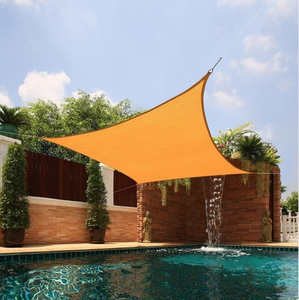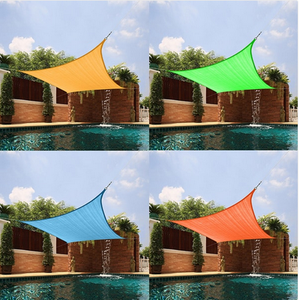(8962 products available)





























































































































































































A sail cover is a protective wrap for sails when not in use. It prevents damage from sunlight, moisture, and debris. There are several types of sail covers, each designed to meet different needs and preferences.
Conventional sail covers:
The conventional sail cover is the most common type. It fits over the entire sail and is attached to the boom and the mast. This cover is usually made from durable materials like polyester or acrylic and has a simple design that makes it easy to use and put on and take off.
Stacking sail covers:
These covers are designed for boats with a boom. They are put on top of each other to make a sail cover stack, which allows easy access to each covered sail. They provide excellent protection against dirt, UV rays, and moisture.
Keyhole sail covers:
Keyhole sail covers are designed to fit around the boom and mast. They have a keyhole-shaped opening at the bottom that slides over the mast, and the boom is secured with Velcro or zipper. They are easy to install and remove.
Mainsail sail covers:
Mainsail covers, or sail bags, are designed to fit a boat's mainsail. They come in different sizes and shapes to fit different mainsails. Some have additional features like pockets for storing small items and extra protection against UV rays and water.
Custom sail covers:
Custom sail covers are designed and made to fit and protect a specific sail. They are more expensive than standard covers, but they provide a better fit and more protection.
Snug fitting sail cover:
Snug-fitting sail covers are designed to fit the dimensions of the sail they cover. They are made to measure and provide a snug fit that prevents dirt and debris from getting inside the cover.
Sail bags:
Sail bags are portable bags for storing and carrying sails. They come in different sizes to fit different sails and are usually made from durable materials.
Modular Design:
Sail covers generally come in two pieces: one for the front and one for the back of the sail. This modular design makes it easy to put on and take off the cover as needed. It also makes the sail cover easy to clean and store.
Color Options:
Sail covers come in a variety of colors to allow users to personalize their boats to match their desired aesthetics. Popular colors include navy blue, black, red, and beige. These colors are often selected for their ability to complement the overall boat design and to hide dirt and stains.
Custom Design:
For those who want to design their sail covers, there are custom design options available. Users can choose the color of their preference and add their boat name or any other text to the sail cover. This option allows for a more personalized and unique sail cover design.
Design Considerations:
When designing a sail cover, several factors should be taken into account to ensure it meets the user's needs and provides optimal protection for the sails. Here are some important design considerations:
1. Ease of Use: Sail covers should be easy to put on and take off, preferably with a secure but adjustable fit that can be done alone without needing extra help. This makes it easier to protect the sails when they are not in use and reduces the chance of leaving them uncovered for long periods.
2. Storage and Portability: When storing or transporting the covers, they should be lightweight and foldable into a compact size. This improves their portability and ensures that they do not take up too much space on the boat when not in use.
3. Ventilation: Some sail covers have ventilated designs to promote air circulation and prevent moisture buildup, which could lead to mold growth or mildew even when the cover is on. This is especially important in humid climates or during the rainy season.
Storage Sail Covers
These are used when the sails are stored away. Generally, this happens when the boat is not in use for a long period of time. The storage cover ensures that the sail is kept in a dry and safe place. It protects the sail from anything that can harm it like dirt, bugs, and getting wet.
Active Sail Covers
This is for when the boat is in use but the sails are not. The active cover allows for protection of the sails that are not being used. It is a must when sailing in order to protect the non-active sails from damage.
Transit Sail Covers
These covers are used when the boat is being transported. Whether by land or water, the transit cover makes sure the sails stay in place and don't move around. It is especially important over long journeys to prevent any damage to the sails.
Emergency Repairs
If a sail rips or gets a hole while out on the water, the emergency repair cover can be used as a quick fix until the boat can get to shore. It covers up tears or damage so the sail can still be used temporarily. These kinds of covers are small and portable for emergencies.
Seasonal Protection
Some boat owners take off their sails completely during the off-season months when the boats aren't being used at all. The seasonal protection covers provide extra security for sails that are put away for longer periods of time. Again, this protects against dirt, bugs, water, and anything else that could harm the sails while not in use.
Custom Fits
Every boat is different! That's why some owners get custom fit covers made that are shaped exactly like their sails. These custom covers work better than generic ones because they fit perfectly and provide the most protection.
Condition of the Sail
When choosing a sail cover, consider the condition of the sail. If the sail is old and worn out, opt for a cover that has good UV protection to extend its life. But if the sail is new, go for a breathable cover that allows for proper airflow and prevents mold growth.
Type of Sailing
Consider the type of sailing. For coastal sailing, a durable and easy-to-clean cover is needed, while for long offshore trips, a cover with excellent UV protection and durability is important.
Fit and Size
Choose a cover that fits the sail well. A loose cover may let the sail move around and get damaged, while a tight cover may be hard to put on and take off.
Materials Used
Check the material. Covers made of solution-dyed polyester last longer and resist UV well, while cotton blends are good for breathability. Make sure the material is waterproof and windproof for better protection.
Ease of Use
Consider how easy it is to use. Look for covers with strong yet lightweight zippers or velcro fasteners for convenient putting on and taking off.
Storage and Portability
Think about storage and portability. Choose a cover that is light and can be folded up small when not in use, so it doesn't take up much space.
Budget
Finally, consider the budget. There are covers available at different prices. Remember, a more expensive cover may use better materials and last longer, so don't just focus on the price.
Q1. What is the purpose of a sail cover?
A1. Sail covers are storage solutions that protect sails from damage caused by UV rays, dirt, mold, mildew, and other elements. They extend the lifespan of the sails and keep them in optimal condition for sailing.
Q2. What materials are used for sail covers?
A2. Sail covers are usually made from durable, weather-resistant fabrics like polyester, acrylic, or nylon. These materials are chosen for their ability to withstand exposure to water, salt, sun, and wind, as well as for their strength, breathability, and ease of maintenance.
Q3. How should a sail cover be fitted?
A3. When choosing a sail cover, it's crucial to consider the size and type of sail it will fit. Covers should be easily worn and removed, with no excess material that could cause flapping or rubbing while sailing. Some covers have adjustable features for a customized fit.
Q4. How can sail covers be maintained?
A4. Take care of sail covers by washing them with mild soap and fresh water, then rinsing thoroughly. Remove any stubborn stains using a soft-bristled brush. Make sure the cover is completely dry before folding or storing it.
Q5. Can sail covers be custom-made?
A5. Yes, many suppliers offer custom sail covers made to order, designed to fit specific sails and meet individual preferences. Custom covers provide a precise fit and can incorporate desired features and design elements.